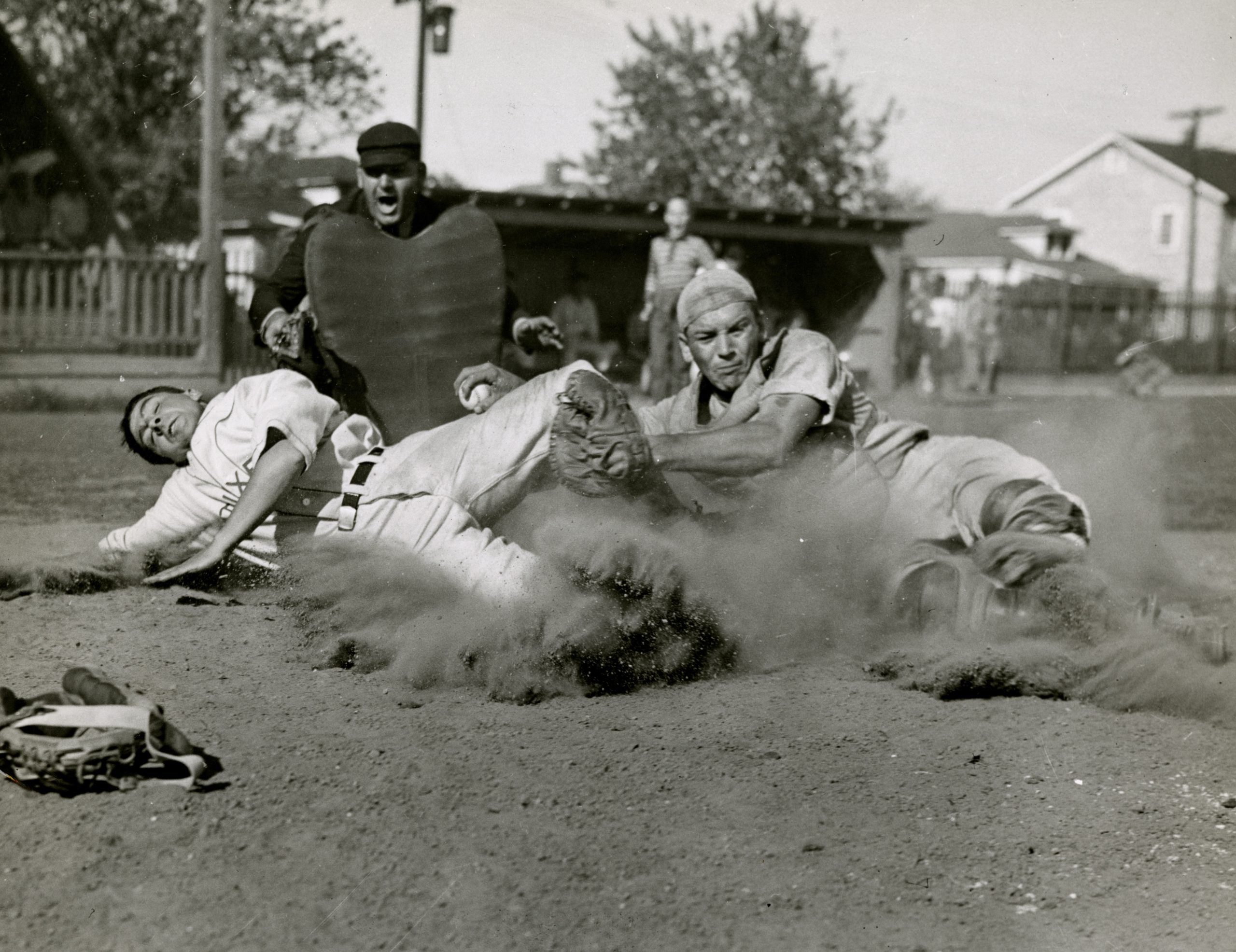Whether serving abroad or on the home front, sports were a large part of everyday life in the military during World War II.
Many different sports were played including basketball, baseball, softball, boxing, volleyball, and football. Sports helped boost morale and promoted leadership, physical fitness, and camaraderie. They also provided an outlet from the realities of war. Soldiers were known to play games on the flight decks of ships and play with a “ghost ball” if they did not have equipment available. Fellow service members would attend each other’s games and matches to watch and cheer.
The military had recognized for years that increasing morale among service members increased efficiency. Therefore, military leaders encouraged organized sports within the ranks. Sometimes sports were just as important for training as military drills. The games were seen as healthy exercise, physical training, and teamwork-building. It was thought that the camaraderie instilled from playing team sports would lead to better leaders and better decision-making skills in battle.
During such an unprecedented time, men and women who had never before considered the military as a possibility, found themselves in the service. Sports provided a means of enjoyment but also a means of bonding for service members far from home. While serving on the home front or abroad, the majority of military personnel were brought together from all over the United States, and playing sports was something they could share. Sports also provided opportunities for soldiers to learn how to work together in a more relaxed environment, outside of drills or active combat. Scores, hits, runs, and plays could be an enjoyable topic of discussion and mental headspace rather than focusing solely on the horrors and stresses of war.
Sports could also keep soldiers out of trouble and break up the monotony of the military routine. Games and tournaments provided an antidote to the restlessness that came with down time. The military had experience with what could happen if a solider did not have enough to do. The War Department had correlated idle time with a rise of AWOL cases and homesickness.
Games could be played against different branches of service. Military bases across different branches of service that were close geographically would often compete. Basketball teams from the Marine base in Quantico, Virginia played against the Army team from Fort Belvoir, Virginia. The Norfolk Naval Training Center was known as the second-best military baseball team in the country after the Great Lakes Naval Training Station in Illinois.
Women in the military also played sports. World War II was the first time that women could officially serve in the military outside of clerical work and nursing. There was a large military women’s basketball league that played at the Hampton Roads Point of Embarkation Military Port in Newport News, Virginia. The Women’s Army Corps basketball tournament was held at Camp Patrick Henry, Virginia in 1945. Similar to men’s military sports, different branches of service competed against each other. The Women’s Army Corps (WAC) and Coast Guard Women’s Reserve (SPARS) would also play each other. The SPARS women’s basketball team from Norfolk defeated the WAC team from Camp Patrick Henry.
The physical and psychological benefits of athletics in the military strengthened the individuals who played them as well as the war effort overall via morale and skills achieved. Sports helped provide direction to service members while keeping them connected to a familiar part of their civilian lives.
If you are interested in World War II history, the Library of Virginia received a NEH grant to digitize our 250,000 WWII veteran separation notices. The Marines and Army Separation forms are available for transcription at the links below. The information gathered from the transcriptions will provide insight to the military and civilian lives of veterans.
World War II Marines Separation Notices
World War II Army Separation Notices
Header Image Citation
Baseball at Marine Barracks, Quantico, Virginia
Courtesy of the Virginia World War Two History Commission









